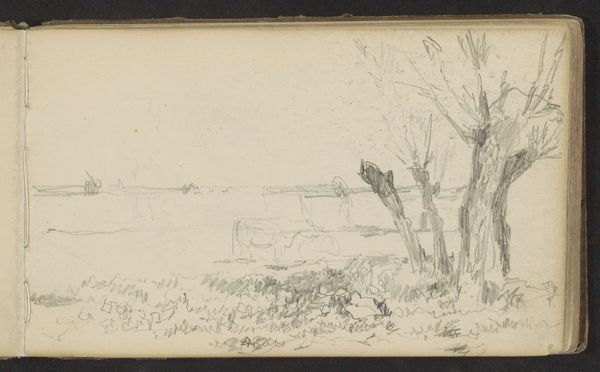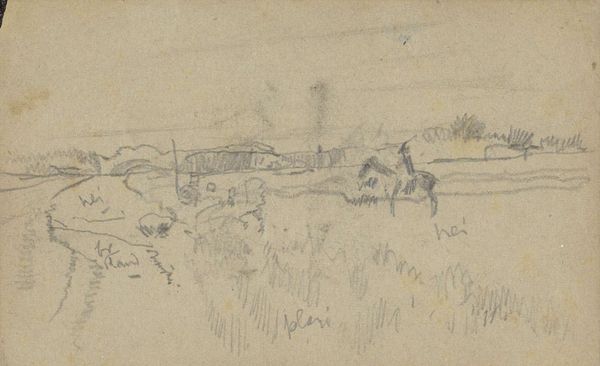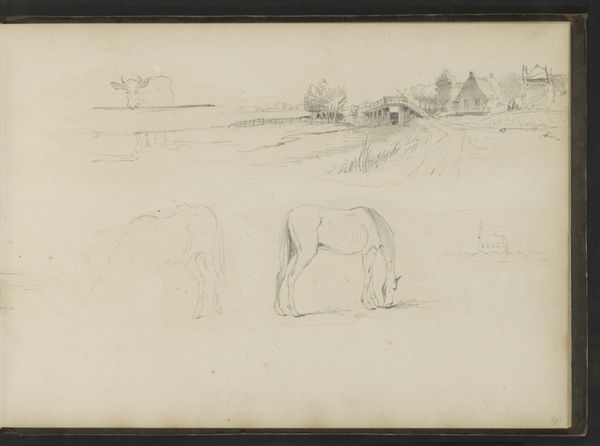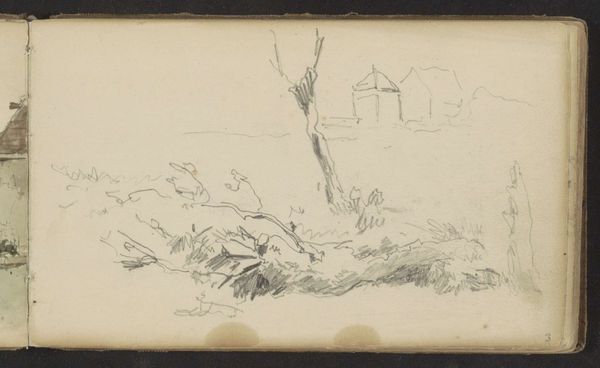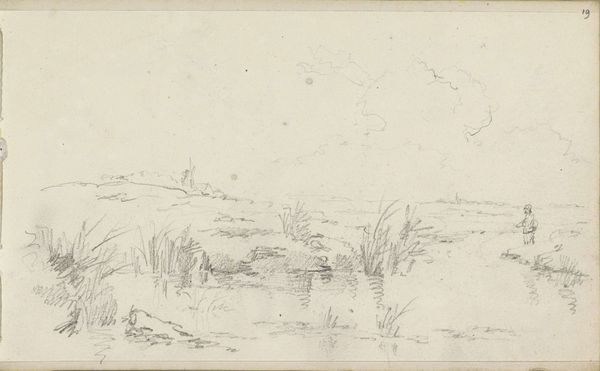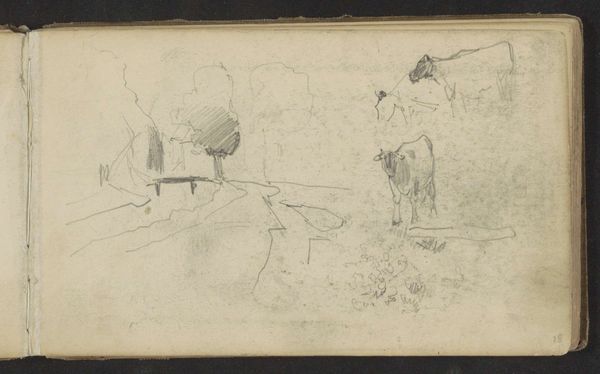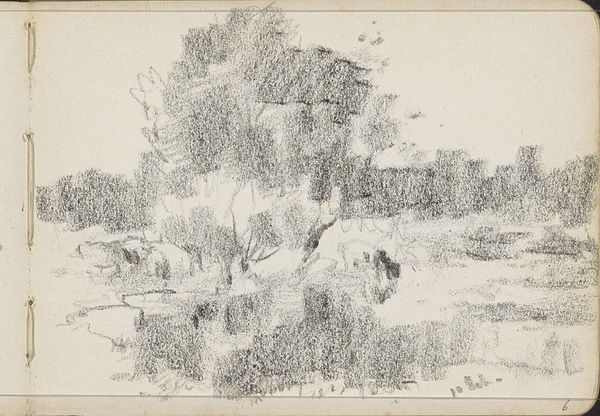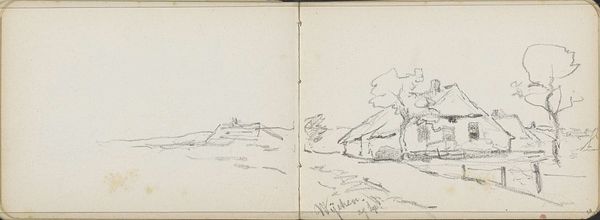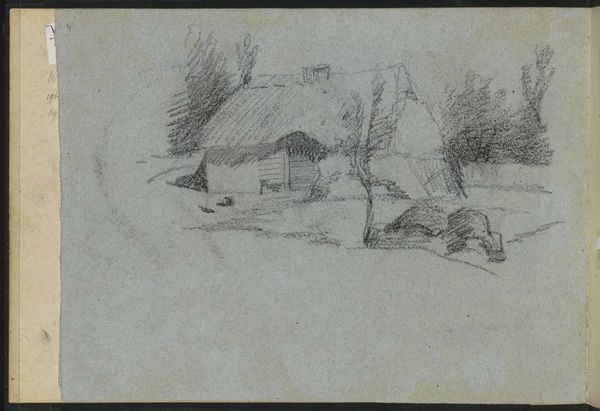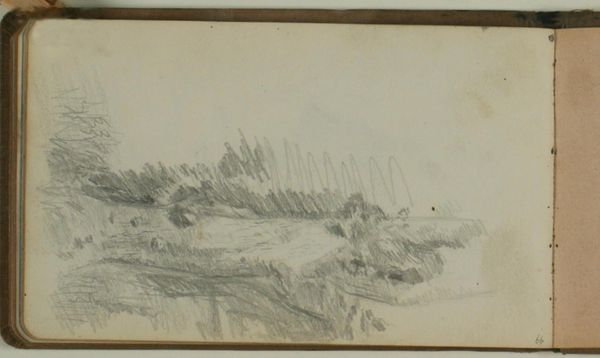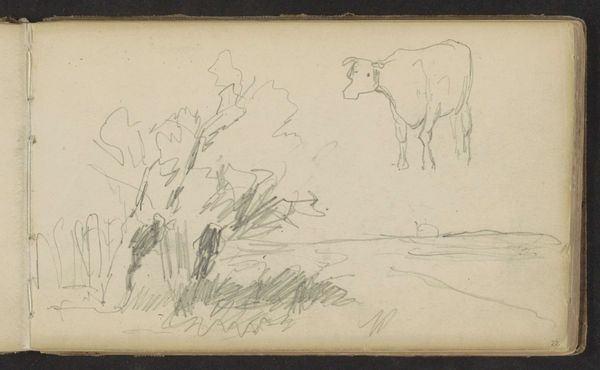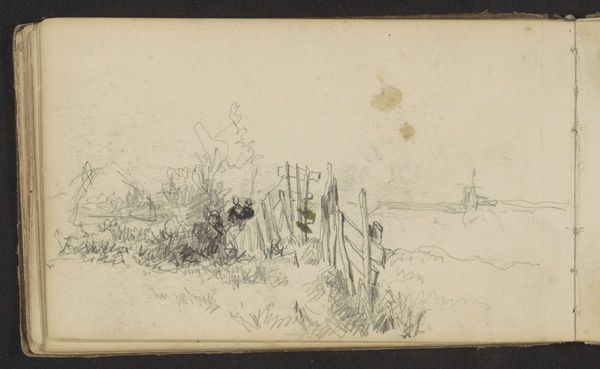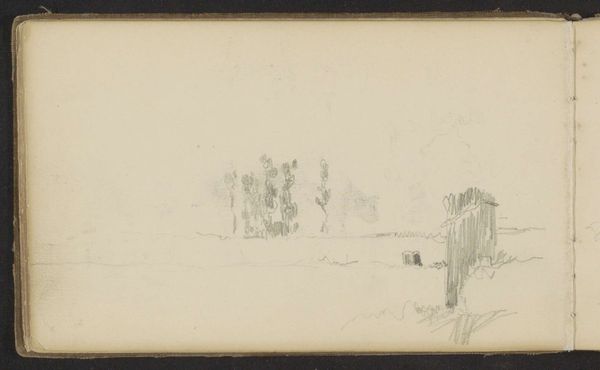
drawing, pencil
#
drawing
#
landscape
#
pencil
#
realism
Copyright: Rijks Museum: Open Domain
Editor: Here we have Johan Hendrik Weissenbruch’s “Landschap met bomen en een molen,” placing us sometime between 1834 and 1903. It's a pencil drawing housed at the Rijksmuseum. The sketchiness really stands out – it feels like a fleeting observation. What can you tell me about this piece? Curator: This seemingly simple landscape drawing invites us to consider the socio-economic realities of the period. Notice the prominent windmill in the background. Windmills powered the industrial processes transforming the Netherlands at that time, shaping labor practices and the very fabric of daily life. Editor: So, you're suggesting the windmill isn’t just scenery? Curator: Precisely. Consider also the pencil itself – a manufactured object. Its widespread availability signifies a shift towards mass production and increased literacy. Weissenbruch's choice of this readily available material, rather than more traditional drawing materials, speaks volumes. What kind of labor do you think underpinned pencil manufacture? Editor: I never thought of it that way, but yeah, someone had to make those pencils. Thinking about it, his choice might imply a kind of democratizing impulse, moving away from the preciousness associated with "high" art materials. Curator: Absolutely. And look closer. How does Weissenbruch use the pencil? Are the lines expressive and varied, or are they uniform? Editor: They're definitely varied, light and dark, quick strokes. Curator: Exactly. And those variations relate to labor of observation and drawing, marking his particular experience and skills. What a complex history and significance lies in this simple landscape, where Weissenbruch documented it with easily accessed materials, produced to support an industrialized society! Editor: That’s so interesting; I now see beyond the initial tranquility and towards a representation of how industrialism and social changes are shaping art itself! Thank you.
Comments
No comments
Be the first to comment and join the conversation on the ultimate creative platform.
